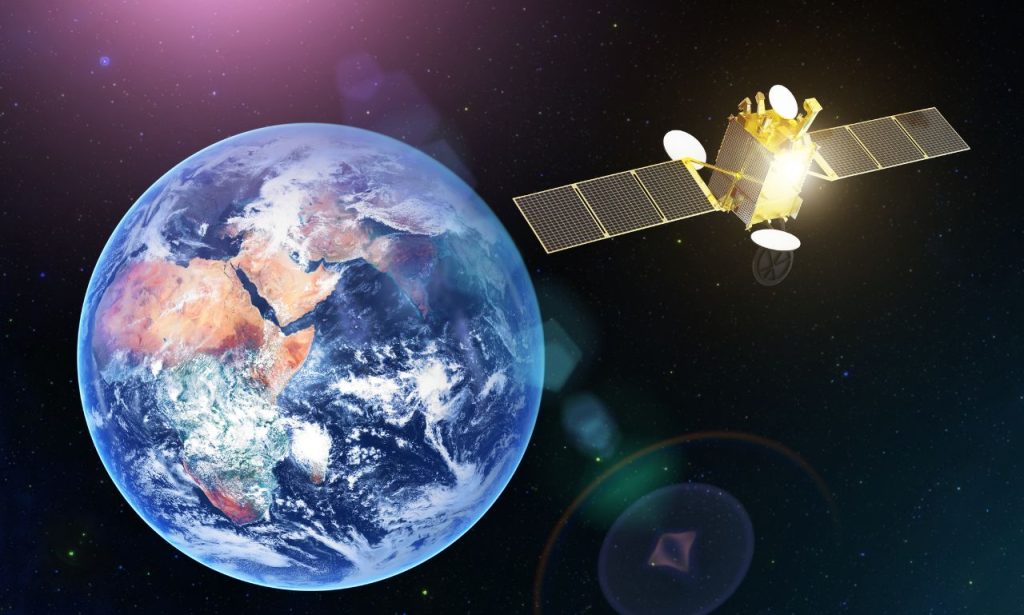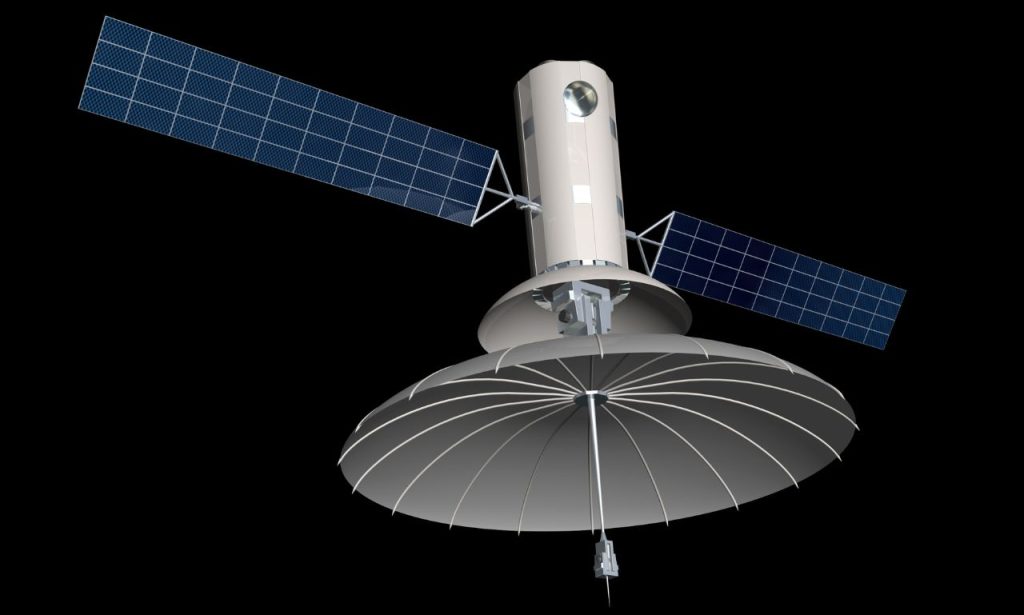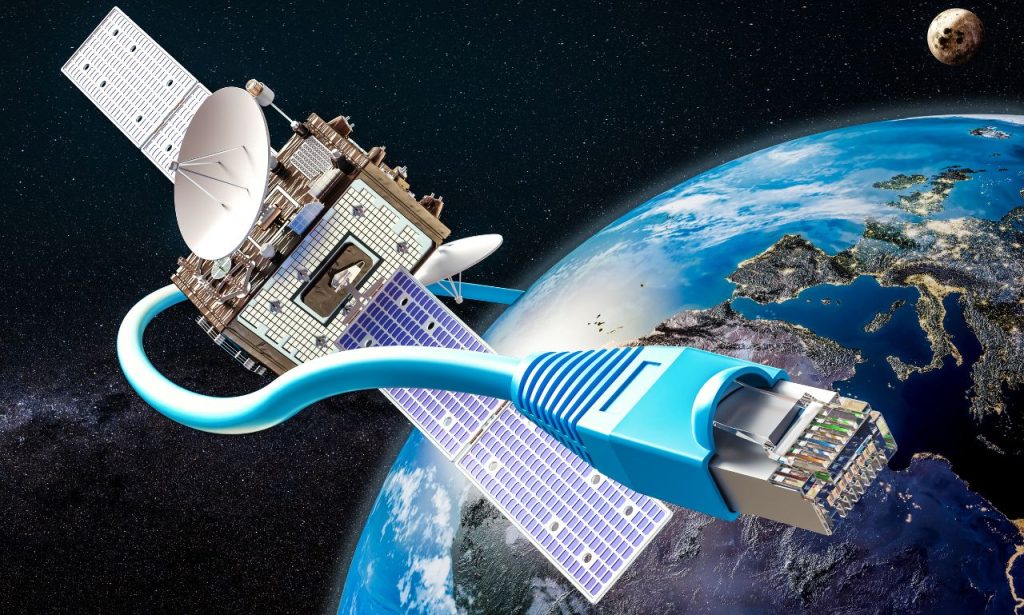For millions of people living in rural or remote regions, access to high-speed broadband remains a challenge. Satellite internet is emerging as a viable solution to bridge this digital divide, bringing fast and dependable internet service to places where traditional infrastructure like fiber optics or DSL is unavailable or impractical.
Overview of Satellite Internet
Satellite internet has revolutionized connectivity, especially for those living off the beaten path. Traditionally, internet access depended on physical infrastructure—cables, towers, and lines crisscrossing the country. But what if you live where roads are more dirt than pavement? Or perhaps you crave an escape to a remote cabin but can’t afford to be entirely off-grid. Enter satellite broadband, a game-changer that literally delivers internet access from the sky.
It’s fascinating to think about how satellites—machinery hurtling through space—bridge the digital divide. They’re the unsung heroes ensuring you can stream your favorite shows, attend virtual meetings, or keep up with social media, even from the middle of nowhere. Satellite internet doesn’t care about the terrain, the remoteness, or the lack of ground infrastructure. If you can see the sky, you can tap into space-based internet.
How Satellite Internet Works

At its core, satellite internet is a sensation of modern engineering and physics. Picture this: when you request a webpage, instead of the data traveling through a labyrinth of underground cables and local networks, your signal takes to the skies. Your home satellite dish acts as both a receiver and a sender. It beams a request up to a satellite orbiting Earth at thousands of miles per hour. This satellite then relays the signal to a ground station, also known as a network operations center. From there, the data you’re requesting—be it a webpage, a video, or an email—is sent back along the same path, but in reverse.
This journey covers tens of thousands of miles and happens in mere fractions of a second. It’s this intricate ballet between your equipment, satellites in space, and ground stations that makes internet via satellite possible. The entire process is seamless to you, but it’s a symphony of technology and coordination happening behind the scenes.
Satellite Technology Basics
To truly appreciate satellite internet, a little background on the technology helps. Satellites used for internet services are essentially sophisticated radio relay stations in space. They utilize microwave frequencies to communicate with user terminals on Earth. These satellites are equipped with transponders—devices that receive signals, amplify them, and retransmit them back to Earth.
Types of Satellites
There are two primary types of satellites used in communications: Geostationary Earth Orbit (GEO) satellites and Low Earth Orbit (LEO) satellites.
Geostationary Earth Orbit (GEO)
GEO satellites sit approximately 22,236 miles above the Earth’s equator. At this altitude, they orbit the Earth at the same rate the planet rotates, meaning they stay fixed over one spot. This positioning is crucial because your satellite dish doesn’t need to track a moving target; it can point to a fixed location in the sky. The downside? The distance causes higher latency because signals have to travel a much longer path.
Low Earth Orbit (LEO)
LEO satellites, in contrast, orbit much closer to Earth—between 99 and 1,200 miles above the surface. Because they’re closer, they can offer lower latency and faster response times. However, they move across the sky rapidly, so a network of satellites—often called a constellation—is required to provide continuous coverage. Your dish or terminal needs to communicate with whichever satellite is overhead at any given time.
Understanding these basics isn’t just about satisfying curiosity. It sheds light on why satellite internet services can vary significantly in performance and cost. The type of satellite network a provider uses directly impacts your internet experience.
Differences Between LEO and GEO Networks
The distinction between GEO and LEO satellites isn’t just technical jargon; it has real-world implications for your internet service. GEO satellites, because of their high altitude, can cover a vast portion of the Earth—about a third of the planet’s surface. This broad coverage makes them efficient for broadcasting services and for reaching remote areas with minimal infrastructure.
However, the long distance also means data takes longer to travel back and forth. This latency can be noticeable, especially in applications where timing is critical, like online gaming or real-time video conferencing. For context, the round-trip data journey to a GEO satellite and back introduces a latency of approximately 600 milliseconds.
LEO satellites, hovering much closer to Earth, reduce this latency to as low as 20 to 50 milliseconds—comparable to traditional terrestrial broadband services. This proximity enables more seamless real-time communication. The challenge with LEO networks is coverage. Because they orbit so quickly, a single LEO satellite can’t provide continuous service to a fixed location on the ground. It takes a constellation of hundreds or even thousands of satellites working in unison to offer uninterrupted coverage.
In practical terms, if you’re using a GEO-based satellite internet service, you might experience delays that can affect certain online activities. With a LEO-based service, those delays are significantly reduced, making for a smoother experience. However, LEO networks are complex and expensive to deploy, which can impact cost and availability.
Common Misconceptions About Satellite Internet

Satellite internet has been around for a while, but misconceptions abound. Maybe you’ve heard that it’s excruciatingly slow, ridiculously expensive, or only works when the sun shines brightly. Let’s tackle these myths head-on.
Speed and Performance Myths
Let’s dive deeper into the speed aspect. Many people recall the days when satellite internet speeds were akin to the frustratingly slow dial-up connections of early internet fame. Back then, latency and bandwidth limitations made streaming videos or downloading large files a painful process.
Fast forward to today, and the landscape has transformed dramatically. Thanks to advancements in satellite technology, including high-throughput satellites (HTS), providers can offer speeds ranging from 25 Mbps to over 100 Mbps. That’s more than sufficient for streaming high-definition content, video conferencing, and general web surfing.
But wait, isn’t satellite internet plagued by high latency? While it’s true that GEO satellite internet has higher latency compared to terrestrial options, the impact is often overstated. For most internet activities—browsing, streaming movies, checking email—you won’t notice the difference. Only in activities where split-second timing matters, like competitive online gaming, will latency become a significant issue.
Moreover, with the advent of LEO satellite constellations like Starlink, latency is dropping to levels that rival fiber-optic connections. These newer networks are designed to deliver low-latency, high-speed internet globally, shattering the old myths about satellite performance.
Cost Considerations
Concerned about cost? Let’s break it down. Satellite internet used to carry a hefty price tag, both in terms of equipment and monthly service fees. Early adopters paid premiums for the privilege of connectivity in remote locations.
Nowadays, competition among providers and technological efficiencies have driven prices down. Equipment costs are often subsidized or included in promotional deals. Monthly service plans have become more flexible, with various data packages catering to different needs and budgets.
Yes, satellite internet might still be more expensive than a standard urban cable plan. But when you consider the alternative—which might be no internet at all—the cost becomes more justifiable. Plus, when you factor in the value of being connected for work, education, and entertainment, the investment pays dividends.
Additionally, some regions offer government subsidies or programs to help rural residents access broadband services, including satellite internet. It’s worth exploring whether such options are available in your area to offset costs.
Weather Effects on Connectivity
Ah, the age-old question: Does satellite internet go kaput when it rains? This concern, known colloquially as “rain fade,” is rooted in the fact that weather can affect satellite signals. Heavy rain, snowstorms, and even dense cloud cover can attenuate signal strength between your dish and the satellite.
However, the impact is often less severe than imagined. Modern satellite dishes and transmitters are designed with these challenges in mind. They utilize higher power levels and advanced modulation techniques to maintain signal integrity in adverse weather conditions. Providers also engineer their networks to compensate for typical weather patterns in different regions.
That said, extreme weather events can still cause temporary disruptions. But these occurrences are usually infrequent and brief. To mitigate potential issues, ensure your satellite dish is properly installed and maintained—free from obstructions like tree branches and positioned with optimal line-of-sight to the satellite.
In essence, while weather can have an effect, it’s not the deal-breaker it once was. For most users, the occasional hiccup is a small price to pay for the broader benefits of satellite connectivity.
Comparing Satellite Internet to Traditional Broadband

When choosing an internet service, understanding how satellite stacks up against traditional broadband options is crucial. Each technology has its own strengths and weaknesses, influenced by factors like availability, speed, reliability, and cost.
DSL vs. Satellite
Digital Subscriber Line (DSL) internet uses existing telephone lines to deliver service. It’s widely available in urban and suburban areas but suffers from significant limitations, especially as you move further from the service provider’s central office. The further you are, the weaker the signal, resulting in slower speeds.
Satellite internet, in contrast, provides consistent service regardless of your geographic location. Whether you’re a mile from the city center or in a remote rural area, satellite can deliver comparable speeds. Additionally, satellite internet isn’t constrained by the aging infrastructure that hampers DSL performance.
From a speed perspective, satellite internet often outperforms DSL, which can be stuck at speeds as low as 1-10 Mbps in some areas. Satellite services typically offer minimum speeds of 25 Mbps or higher, translating to a noticeable difference in your experience.
However, DSL generally has lower latency than GEO satellite internet, which can make activities like gaming or certain real-time applications smoother. But with emerging LEO satellite networks, this latency gap is narrowing.
Cost-wise, DSL may be cheaper due to existing infrastructure and competition in populated areas. But for those in locations where DSL speeds are abysmal or service is unavailable, satellite internet provides a viable, and sometimes the only, alternative.
Cable vs. Satellite
Cable internet leverages the same coaxial cables that deliver television service. It’s capable of delivering high-speed internet, often exceeding 100 Mbps and even gigabit speeds in some areas. The primary advantage of cable internet is its speed and relatively low latency, making it suitable for virtually all online activities, from high-definition streaming to competitive gaming.
However, cable internet’s availability is limited to areas where cable companies have invested in infrastructure. Rural and remote areas are frequently left out due to the high cost of laying cables over long distances with sparse populations.
Satellite internet, not bound by ground-based infrastructure, provides an attractive alternative for these underserved areas. While satellite may not match the highest speeds of cable in urban settings, it offers respectable performance that can handle streaming, browsing, and more.
Another consideration is network congestion. Cable internet performance can degrade during peak usage times since bandwidth is shared among users in a neighborhood. Satellite internet can also experience congestion, but providers manage network capacity to mitigate this.
Ultimately, if cable internet is available and meets your performance needs, it may be the preferred option due to speed and latency advantages. But if you’re outside the cable company’s reach, satellite internet is your gateway to broadband connectivity.
Fiber vs. Satellite
Fiber-optic internet is the gold standard for speed and reliability. Using thin strands of glass or plastic to transmit data as light signals, fiber internet can deliver symmetrical upload and download speeds exceeding 1 Gbps. It’s the dream for heavy internet users, content creators, and anyone desiring the fastest possible connection.
The downside? Fiber-optic networks are expensive to deploy and often limited to densely populated areas. The process of laying fiber cables involves significant investment and logistical challenges, which means rural and even some suburban areas lack access.
Satellite internet fills this accessibility gap. While it doesn’t yet match fiber’s blazing speeds, satellite internet provides broadband-level speeds where fiber can’t or won’t go. For users in remote locations, satellite isn’t just an alternative; it’s often the only path to high-speed internet.
In terms of latency, fiber is unbeatable, offering near-instantaneous data transmission. Satellite internet, especially via GEO satellites, can’t compete on latency due to physical limitations—the distance signals must travel to space and back introduces unavoidable delays. However, as mentioned, emerging LEO satellite networks are bringing latency down significantly.
Cost-wise, fiber internet can be competitive, but availability is the key constraint. Where both options are available, fiber is usually the superior choice. But in the vast regions where fiber hasn’t penetrated, satellite internet remains a vital lifeline to the digital world.
Benefits of Satellite Internet

Satellite internet isn’t just a last resort. It shines in ways you might not expect.
Accessibility for Rural Residents
For many rural residents, the quest for reliable internet connectivity has been a long and frustrating journey. Traditional internet service providers often bypass rural areas due to the high costs and low returns associated with building infrastructure for sparsely populated regions.
Satellite internet changes the game. By eliminating the need for ground-based infrastructure, it provides a direct link between remote locations and the global internet. This accessibility empowers rural communities in numerous ways:
- Education: Students gain access to online learning resources, virtual classrooms, and educational content that enrich their learning experiences.
- Healthcare: Telemedicine becomes a reality, allowing residents to consult with medical professionals without traveling long distances.
- Business Opportunities: Entrepreneurs can reach broader markets, engage in e-commerce, and utilize digital tools to grow their businesses.
- Social Connection: Families stay connected through social media, video calls, and other online platforms, reducing the isolation that can come with rural living
In essence, satellite internet levels the playing field, providing rural communities with the same digital opportunities as their urban counterparts. It’s not just about streaming movies; it’s about enabling a better quality of life.
Disaster Recovery and Emergency Connectivity
When disaster strikes—be it hurricanes, earthquakes, wildfires, or floods—traditional communication networks are often among the first casualties. Downed power lines, damaged cell towers, and disrupted fiber cables can leave entire regions cut off when they need connectivity the most.
Satellite internet shines in these scenarios. Since it operates independently of ground infrastructure, it’s less vulnerable to terrestrial disruptions. Emergency response teams rely on satellite internet to coordinate rescue efforts, access critical information, and communicate with the outside world.
For affected communities, satellite internet can be a lifeline. It allows residents to contact loved ones, receive updates, and access essential services when other means are unavailable.
Moreover, the quick deployment of satellite terminals means that aid organizations can establish communication hubs rapidly. Portable satellite equipment can be transported to disaster zones, providing instant connectivity where it’s needed most.
Challenges and Limitations of Satellite Internet
No technology is perfect. Here are some hurdles you might face.
Latency Issues
Latency, measured in milliseconds, refers to the time it takes for data to travel from your device to the server and back. In satellite internet, especially with GEO satellites, latency is typically around 600 milliseconds or more, compared to 20-50 milliseconds in terrestrial broadband.
This delay can impact specific applications:
- Online Gaming: In fast-paced games where reaction time is critical, high latency can be a significant disadvantage. Actions may feel sluggish, and you might experience lag or synchronization issues.
- VoIP and Video Calls: While generally usable, you might notice slight delays in conversations, leading to people talking over each other or brief pauses.
- Real-Time Applications: Stock trading platforms or remote desktop applications that require instant responsiveness might be less efficient.
For most other uses—browsing, streaming, downloading—latency isn’t a major issue. Streaming services buffer content, and web browsing tolerates higher latency without significantly affecting user experience.
With the advent of LEO satellite networks, latency is decreasing substantially. Companies like Starlink report latencies as low as 20 milliseconds, potentially alleviating this concern entirely.
Data Caps and Restrictions
Some providers impose data limits. Exceed them, and you might face throttled speeds or extra charges. Keep an eye on your usage.
Many satellite internet plans come with data caps to manage network capacity and ensure fair usage among customers. These caps can vary widely between providers and plans, ranging from a few gigabytes to unlimited data options.
Once you reach your data limit, several things might happen:
- Throttled Speeds: Your connection speed may be reduced, making activities like streaming or downloading sluggish.
- Additional Charges: Some providers charge for extra data usage, which can lead to higher bills than anticipated.
- Priority Data: Some plans offer “priority data,” after which you remain connected but may experience slower speeds during peak times.
It’s crucial to assess your typical data usage. Streaming high-definition video, online gaming, and frequent large downloads consume more data than activities like browsing or emailing.
To avoid surprises, monitor your data consumption and consider plans that align with your usage patterns. Some providers offer tools or apps to help you track usage in real-time.
Leading Satellite Internet Providers

Who’s who in the satellite internet game?
HughesNet Overview
HughesNet is a veteran in the satellite internet industry, serving customers across the United States for decades. They utilize GEO satellite technology and have made significant strides in improving speed and reliability.
- Plans and Pricing: HughesNet offers plans with speeds up to 25 Mbps. All plans come with the same speed but vary in data allowances, ranging from 10 GB to 50 GB per month. After exceeding the data cap, users experience reduced speeds but can purchase data tokens for additional high-speed access.
- Features:
- Bonus Zone: An additional 50 GB of data per month during off-peak hours (2 AM to 8 AM), ideal for scheduling downloads or system updates.
- Built-in Wi-Fi: Their modem includes Wi-Fi capabilities, simplifying the setup process.
- Pros:
- Wide availability, covering the entire continental U.S.
- Consistent service with minimal downtime.
- Cons:
- Strict data caps may not suit heavy users.
- Higher latency due to reliance on GEO satellites.
HughesNet is a solid choice for you if you’re seeking reliability and straightforward plans, especially in areas where alternatives are limited.
Viasat Overview
Viasat, formerly known as Exede, is another major player offering satellite internet services with a focus on higher speeds and larger data allowances.
- Plans and Pricing: Viasat’s plans range from 12 Mbps up to 100 Mbps, depending on your location. Data allowances vary, with options offering between 40 GB and 150 GB per month.
- Features:
- Unlimited Data Plans: While there are data thresholds after which speeds may be slowed during peak periods, Viasat doesn’t cut off service or charge overage fees.
- Video Streaming Optimization: Plans may optimize video streams to specific quality levels (e.g., 480p, 720p) to conserve data.
- Pros:
- Higher speed options compared to some competitors.
- More generous data allowances.
- Cons:
- Plans can be more expensive, especially for higher-speed options.
- Speeds and availability vary significantly by location.
Viasat appeals to you if you require higher speeds and more data, making it suitable for households with multiple users or heavier internet usage.
Starlink Overview
Starlink, a project by SpaceX, is disrupting the satellite internet industry with its ambitious plan to deploy thousands of LEO satellites to provide global broadband coverage.
- Technology: By utilizing LEO satellites, Starlink aims to offer high-speed internet with low latency, challenging traditional satellite internet limitations.
- Plans and Pricing: The service currently offers a single plan with advertised speeds between 50 Mbps and 150 Mbps, with reports of even higher speeds in some areas. The monthly cost is around $99, with an initial equipment fee.
- Features:
- Low Latency: Latencies as low as 20 milliseconds make activities like online gaming and real-time video conferencing feasible.
- Expanding Coverage: Starlink continues to expand its network, with service availability increasing rapidly across the globe.
- Pros:
- High speeds and low latency rivaling terrestrial broadband.
- Ideal for remote areas previously underserved by broadband providers.
- Cons:
- Service is still in beta with occasional interruptions.
- Upfront equipment costs are higher.
Starlink represents a significant leap forward, offering performance that was previously unattainable via satellite. It’s an exciting option if you’re looking for high-speed connectivity in remote locations.
Ready to elevate your online experience? Dive into the world of high-speed satellite internet and connect without boundaries.
Also Read: How to Build a Business Networking Group
FAQs
Yes, severe weather like heavy rain or snow can impact the quality of your satellite internet connection. However, modern technology has minimized this issue, and most users experience only minor interruptions.
Installation is relatively simple: a technician will set up a small satellite dish at your location and connect it to a modem inside your home. Once installed, the connection works just like any other form of internet access.
Yes, many satellite providers offer portable options for RVs, boats, and other mobile setups.





